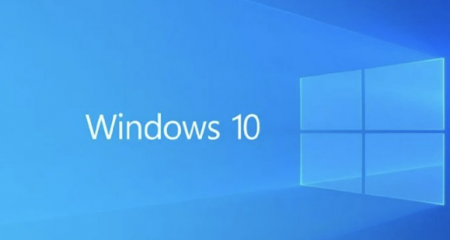Sometimes, you may get sound problems on Windows 10 that does not allow you to listen to any audios, play videos, or even use certain apps. Certainly, it is such an annoying thing that really stops you from enjoying listening to any songs or even if you are working. Then, how to fix sound problems on Windows 10?
The Official Guide to Fix Sound Problems in Windows 10 from site microsoft.com
Well, the only accurate and great ways to fix sound problems on Windows 10 that you can get is from the official site of Microsoft.com. At this page, you absolutely can find a lot of solutions in fixing any kinds of problems especially related to Windows. Of course, this site can also be an option when you are looking for the ways to fix sound problems on Windows 10.
The page which shows about Fix sound problems in Windows 10 can be accessed here. . From this page, you will see the solution to fix your sound problem on Windows 10. Of course, the solutions are explained step-by-step. Let’s see how to fix the sound problem from the official Microsoft site.
Solution 1: Check your Speaker Output
The basic way that you can take in fixing the sound problem is to check your speaker output. Here’s how:
- First, choose the Speakers icon from the taskbar.
- Then, choose the arrow to open a list of audio devices which are connected to your computer.
- Here, you need to check whether your audio is playing to the audio device you prefer or not such as headphones or speaker.
- If the first solution cannot solve your problem, you can continue to the next solution.
Solution 2: Run the Audio Troubleshooter
If the first solution cannot solve your problem, you can take this second solution that allows you to run the audio troubleshooter. To run it:
- You can type audio troubleshooter in the search box on the taskbar.
- Then, choose Fix and find problems with playing sound options. Click on the Next button.
- Choose the device that you want to troubleshoot and continue through the troubleshooter.

- It is time to launch the troubleshooter from Audio Settings by going to Start, choose Settings and Systems and then Sound. Last troubleshoot.
Solution 3: Verify All Windows Updates Are Installed
This solution can be your option if the previous solution cannot solve your problem. Well, to verify all Windows updates, you can follow some instructions below!
- First, go to Start Button.
- Choose Settings option.
- Then, select Update & Security
- Continue to choose Windows Update.
- Last, choose Check for Updates option.
Do one of the options below:
If the status says “You’re up to date” you can go to the next step.
If the status says “Updates are available,” choose Install now button.
- Then, choose any updates that you want to install. Then, choose Install button.
- Now, you can restart your computer and check if your sound is working well.
Solution 4: Check Cables, Jacks, Plugs, Speaker, Volume and Headphone Connections
To Solve your sound problem, you can also check any devices related to the sound. Try those steps below:
- First, it is needed for you to check your speaker and headphone connections. Ensure that all cables and cords are plugged in.
- Make sure all cables and cords are plugged into the suitable jack.

- Ensure the power is turned on by checking the volume level.
- Ensure that the mute settings are turned off.
- Then, try to turn up all the volume controls.
- You can also try to connect your headphones and speaker to a different USB port.
- It will be possible that your speakers will not work when your headphones are plugged in. Here, you can unplug your headphones and check if that helps.
Solution 5: Check the Sound Settings
To check it:
- First, right-click on the Speakers icon from the taskbar and choose Open Volume Mixer.
- Here, you can see a set of volume controls of your devices. Make sure none of them are muted.

- Then, check your device properties to ensure that your device has not been turned off by any mistakes.
- In this step, you can go to Start button, choose Setting and System then Sound.
- Choose your audio device and then Device properties. Make sure to choose Device properties for both input and output devices.

- Ensure that you turn off the check box for the input and output devices.
Solution 6: Fix your Audio Drivers

In this solution, ensure that your audio driver is up-to-date and update it if needed. Well, if it does not work, you can try uninstalling the audio driver. Besides, you can also try to use the generic audio driver which comes with Windows.
Solution 7: Set Your Audio Device as the Default Device
To set your audio device, you can do:
- First, type Control Panel in the search box on the taskbar and choose it.
- Choose Hardware and Sound and select Sound.
- Then, right-click the listing for your audio device on the Playback tab.
- Choose Set as Default Device. Hit the Ok button.

Solution 8: Disable Audio Enhancements
Turning off the audio enhancements may solve your problem. Here’s how:
- First, type Control Panel on the search box on the taskbar. Choose it.
- Choose Hardware and Sound and choose Sound.

- Then, right-click on the Default Device on the Playback tab and choose Properties.

- Choose either the Disable all enhancements or the Disable all sound effects check box on the Enhancements tab.

- If it does not work, you can choose another default device.
- Choose either the Disable all enhancements or the Disable all sound effects check box on the Enhancements tab.
- Choose Ok and you can try playing the audio again.
Solution 9: Restart Audio Services
Here’s how:
- Type “services” in the search box on the taskbar and choose it.
- Choose each of following services:
- Windows Audio
- Windows Audio Endpoint Builder
- Remote Procedure Call (RPC)
- Then, right-click and choose Restart button.
Well, those are all solutions that you can do to fix the sound problem on Windows 10. Of course, there are still some solutions in fixing the sound problems that you can get from Microsoft site including:
Solution 10: Trying different audio formats
Solution 11: Restarting to apply installed updates
Solution 12: Check for IDT High definition Audio CODEC in Device Manager.
Solution 13: Ensure to keep your privacy settings
AUTHOR BIO
On my daily job, I am a software engineer, programmer & computer technician. My passion is assembling PC hardware, studying Operating System and all things related to computers technology. I also love to make short films for YouTube as a producer. More at about me…





